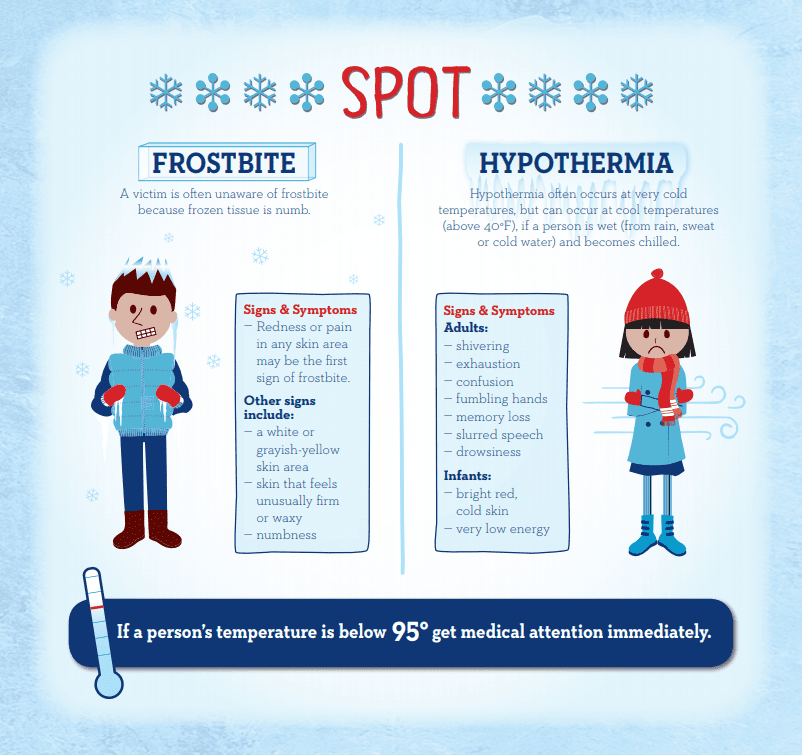It’s getting colder again tonight. And this is just the appetizer of what’s to come next week. A lobe of the polar vortex will break off and ship the coldest air of the season south to the Bluegrass. Consider this your forewarning. This blast of brutal cold arrives Wednesday of next week.

This is a good time to review some cold weather safety tips. Seth wrote a great blog post about preping your vehicle of winter weather and the cold. Here are some other types for keeping yourself, your family, and your property safe during the harshest parts of winter.

Clothing
Let’s start with how you dress. It is best to dress in layers of loosing-fitting, lightweight, warm clothing. Wear a hat. Wear a scarf and use it to cover your mouth to protect your lunges from the extreme cold. Mittens are better insulators that gloves.
While out in the elements try to stay dry and out of the wind. Consider investing in water-proof and wind-resistant boots and outerwear. If you’re working outside and start to get warm, remove layer. Extra perspiration will increase heat loss. Don’t ignore shivering. It’s your body’s first sign of heat loss.
Frostbite and Hypothermia
These are two cold weather illness that develop due to extended exposure to the cold. We tell you to cover as much exposed skin as possible because these are the areas of the body that are most susceptible to frostbite. We’re talking about your fingers, ears, nose, and cheeks. (Although not exposed, your toes can also get frostbite. Consider an extra pair of warm socks.) You should know the symptoms of frostbite and hypothermia, and how to treat someone who is showing the signs of the illness.

If you notice someone is showing signs of frostbite or hypothermia, seek medical attention as soon as possible. Second, get the individual to a warm place. Remove all wet pieces of clothing. Warm the person under dry layers of clothes and blankets. Never use a fireplace, radiator, or stove for warming. You can to warm the core of the body then the extremities. Finally, place the areas affected by frostbite in warm-to-the-touch water. Don’t rub the affected areas.
Cold weather also puts extra stress on your heart. While doing outdoor chores, dress warmly and work slowly.
Pets
The second “P” to remember when it comes to cold weather safety is pets. It’s simple. If it’s too cold for you outside, it’s too cold for your pets. Bring all animals in, whether it’s in your home or a warm shelter.
Pipes
Burst pipes are common during extreme cold snaps. There are a few things you can do to prevent this from happen. At night allow hot and cold water to drip from the faucet. Open cabinet doors so heat can flow around un-insulated pipes under the sink or near an outer wall. You can also purchase special insulation for your pipes at a hardware store.
If you have outdoor faucets, turn of the flow of water and flush out any water that is lingering in the pipes.
In case your pipes happen to freeze or burst, known how to turn the water off. If the pipe is frozen, never thaw with an open flame. Use a hair dryer instead. Keep the heat above 55° in your home. If you’re traveling, have a neighbor or friend check on your pipes every couple of days.

